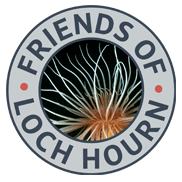03/01/2022
Loch Hourn Sea Lice Modelling Report Summary
Based on a report from MTS-CFD Ltd*
Executive Summary
- The correlation between salmon farms, sea lice and the decline in wild salmonids is well established in the scientific literature.
- Modelling the impact of sea lice on wild fish, especially on smolts as they migrate from fresh water rivers to the open seas, is one of the most accurate ways to assess the risk of harm.
- Sea lice from the Loch Hourn farm already represent a high risk to migrating smolts, but with additional sea lice emanating from an expanded farm, this risk becomes critical.
- This summary of a sixty-one-page report shows that if Mowi’s plans are approved, it would tip the distinct populations of Loch Hourn salmon and trout towards extinction.
They are already in steep decline. - Any expansion of an existing salmon farm comes with costs, but the loss of our wild salmon and sea trout would be one of the worst environmental outcomes.
- We trust this evidence will help persuade planners to oppose Mowi’s application to expand the Loch Hourn farm.
Click here to Download the report:
Loch Hourn Sea Lice Modelling Report Summary
Conclusion
- Wild salmon (and sea trout) in the Loch Hourn area are already in steep decline and their populations are among the most threatened in Scotland.
- Loch Hourn’s water flushes unusually slowly. As a result, it retains sea lice larvae and parasitic copepodids at a density that threatens the survival of wild smolts.
- Interactions of adult sea lice from multiple adjacent farms result in an added cumulative impact on wild fish and smolts in Loch Hourn.
- The data presented in MTS-CFD’s report shows that sea lice copepodid densities in and around Loch Hourn are already at or beyond threshold levels judged by the Norwegian authorities to threaten the future of wild salmon populations in local rivers.
- Loch Hourn salmon are threatened with extinction. When the distinct lineage of adult salmon from Loch Hourn no longer return to their rivers of origin, the river can never be successfully restocked or revived.
- Mowi’s plan to expand their salmon farm is environmentally unsustainable in relation to the future survival of wild salmonids in Loch Hourn.
- We agree with the Scottish Parliament’s Rural Economy and Connectivity and Environment, Climate Change and Land Reform Committees that the status quo of aquaculture regulation is not an option.
- The RECC Committee Report recommends that the precautionary principle should be applied in a meaningful and effective manner in relation to applications for new sites and expansion of existing sites.
- In view of the evidence presented above, we entreat The Highland Council’s Planning Committee to reject Mowi’s expansion plans.
* 1 Scanlon T. and Moreau J. (2021) “A Hydrodynamic Model of the Loch Hourn with Coupled Sea Lice Dispersion”
www.MTS-CFD.com
